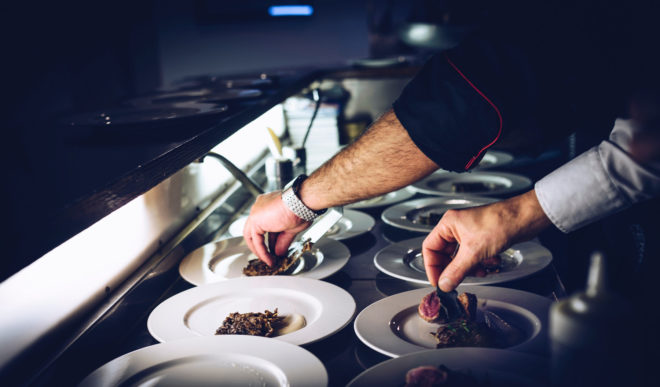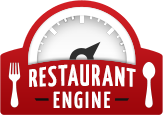Don’t Make These Restaurant Health Code Violations

Health inspection violations matter to your customers.
Health code inspections aren’t something to take lightly as they can have repercussions for your business. National policies are set by the U.S. Food and Drug Administration (FDA) which discloses guidance for restaurants on its website. Since the COVID-19 pandemic, all health inspectors have elevated their cleanliness standards, with many permanent changes to health codes.
If you want to make the health inspector happy every time, as well as your customers, don’t make these restaurant health code violations. In this article, we look at some common mistakes and ways to avoid them.
Common Health Code Violations
Avoid these common violations with a little bit of extra effort and some purposeful training time for your staff.
- Personal Hygiene
How clean are your employees? Are they wearing gloves and hairnets? Do they have their cell phones nearby (they shouldn’t because they are germ-filled!)? Teach your employees how to wash their hands. Show them these scientific reasons for 20 second handwashing from the U.S. Centers for Disease Control and Prevention. Scrub up to the elbows and under the fingernails. In addition, your cooks should always wear clean uniforms daily. - Food Storage
Cross contamination is your enemy. If your food storage isn’t controlled well, you will violate the health code. This happens most commonly when juices from one food item drip on another. For example, if beef drips on chicken, you’ll need to toss both. Store like items together, but if you’re storing vertically in a walk-in, always put veggies on the top, followed by cooked veggies, cooked meats, cooked seafood, raw seafood, raw beef, raw pork, and then raw chicken. - Cross Contamination
This can happen in more areas than food storage. For example, if your chef throws three burgers on the grill and then goes over to cut lettuce without washing his hands, you are in violation. Always use different cutting boards for raw meat and veggies and have hand-wash stations available. Follow the FDA’s guidance: Clean, Separate, Cook, and Chill. - Time and Temperature
Know what foods are safe at room temperature and what foods should be refrigerated. For example, mayonnaise should be refrigerated. But, do you know how long it can last there? Always keep cold foods below 40 degrees and hot foods above 140 degrees. All foods need to be refrigerated after a certain amount of time out on a counter. - Storage and Use of Chemicals
What are you using to clean your kitchen surfaces? Check this list of approved sanitizers from the U.S. Environmental Protection Agency (EPA). Are your staff reusing cloths? Are they trained on your particular cleaning chemicals? Where are they being stored? Your health inspector has very specific rules on these. Make sure your team knows how to sanitize a surface the right way and then store the chemicals (hint: not near food). - Storage of Plates, Glasses, and Silverware
Do not store these items near cooking nor food preparation areas. In addition, all plates and glasses must be stored upside down. Silverware must be stored covered. Instruct your staff to only store the handles, rims, and stems. They should never touch a utensil where a diner would. - NEW: Wear Gloves and Face Masks
The entire world learned in 2020 that respiratory droplets are a primary cause of disease transmission. Viruses are tiny, simple proteins that can “live” (i.e. retain their protein structure) for several days on many kinds of surfaces. Even asymptomatic workers who appear to be disease-free can infect others with a variety of diseases, including the common cold or flu. Innocently exhaling can send respiratory droplets onto food and various surfaces which in turn might infect your customers. Better to be safe, learn the lessons from the global pandemic, and permanently upgrade your safety practices. Provide complimentary gloves and face masks for all of your workers.
Next, let’s take a look at that health inspection.
Things to Know Before a Health Inspection
You’ll find in most cities that your local health department will conduct health inspections anywhere from once to four times a year.
You want to be prepared every time by following the regulations every day of the year.
But, if you know your time is up, and the health inspector is on the way, review the regulations and your food standards to make sure you are protecting your restaurant.
How to Prepare for the Health Inspection
You can use a tool called the HACCP (Hazard Analysis and Critical Control Points Plan) to prepare for your health inspection.
By using this system, you can identify points in your cooking process and kitchen areas where the risk of contamination is the greatest. In addition to the HACCP plan, you should also check the guidelines based on the National Institute for Occupational Safety and Health and take some additional steps to get ready.
- Review your safety labels on both food and equipment. Things to look at include expiration dates, personal hygiene flyers, internal temperature requirements, and cross-contamination practices (mentioned above).
- If you don’t know, check with your local health department for their regulations and forms so that you will know exactly what the health inspector is looking for when he or she arrives.
- Do your own random inspections and don’t tell your staff when you’re underway. Because the health department can show up unannounced, this is good practice for both you and your team.
- Once you do your own random inspection, schedule a meeting with your employees and make sure they know what wouldn’t pass and how to remedy the shortcomings.
- Do random quizzes with your staff. Ask safety questions and find out if they know the regulations as well as you do. Do they know, for example, you can’t store chicken and vegetables in the same containers?
- Continue to evaluate your staff. They are on the front lines and responsible for staying up-to-date on the regulations. Make sure to continue random inspections and quizzes.

Train your staff so they are clear on what is and what isn’t a health code violation.
Dos and Don’ts During the Inspection
Because anyone can pretend to be a health inspector, make sure you verify your inspector’s credentials. In most instances this person will volunteer them to you before you ask. If you are unsure, call the health department to verify. (tweet this)
Always be respectful of the health inspector. Treat this person as you would any guest in your restaurant. Give this person full access to your restaurant and space to do her or his work.
Do not try to hide any area, as this will alarm the inspector and cause additional scrutiny. The inspector has a legal right to access all physical spaces of your restaurant for inspection.
Stay with the inspector so you can view any violations. You may be able to correct some of your violations immediately, which is a bonus for you. Your health inspector will record this as fixed on the spot, so you aren’t getting an out of compliance score.
If you don’t understand the violation, ask for more information. Try not to be argumentative. Use your conflict resolution skills to get more information so you can resolve any issues.
After the Inspection
You will get an inspection report from the health inspector, usually with grades attached.
Read this report very carefully. Go over it with your staff. Then, fix all of the violations you had immediately.
Your local newspaper often reports these violations (and its online version), so you want to make sure you fix them, so customers will keep showing up at your door.
While you can correct some of these immediately during the inspection, others may take you a bit longer. They may also require a re-inspection. Don’t let too much time go in between the first inspection and the re-inspection. (tweet this)
If you had to change some things and were in violation, be sure to provide ongoing training to your food staff. Verbal training as well as prominent signage can help.
If you would like to talk with someone about these issues, your menu, or improving your online presence, please schedule a complimentary consultation with our team of restaurant experts. We have been serving restaurant owners since 2015.
To Conclude
Getting dinged for health code violations can spell disaster for your restaurant, especially once word gets out.
You can bet your that customers won’t want to eat in a dirty or otherwise unsatisfactory restaurant. Dirty kitchens are the basis for bestselling books like Anthony Bourdain’s Kitchen Confidential and national television shows like Gordon Ramsay‘s Hell’s Kitchen and 24 Hours to Hell and Back.
If you have any violations, fix them straight away. Make sure you know how each violation occurred and why. Talk to the offending staff members.
And, as we mentioned before, continue with your own ongoing surprise inspections.
Finally, if you don’t agree with a violation, you can always appeal it.
Take your health inspections as learning opportunities. After all, you don’t want to spread illness, and you want your customers to be safe. Here again is the link to the FDA’s best practices for restaurants.
By avoiding common health code violations, you can help solidify the success of your eating establishment.
At Restaurant Engine, not only do we create great, responsive websites, but you can count on us to create a website that drives business to all your restaurants and edges you above the competition by using mobile-friendly design with a terrific user experience. Ready to take the plunge and create a website with an online menu, blog and beautiful photos? Get your free website consultation today!
Images: Photo by Fabrizio Magoni and Jason Briscoe on Unsplash


Awesome information and services offered. I will certainly use your services for my future restaurant business.